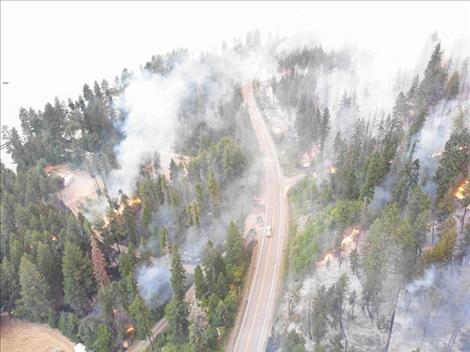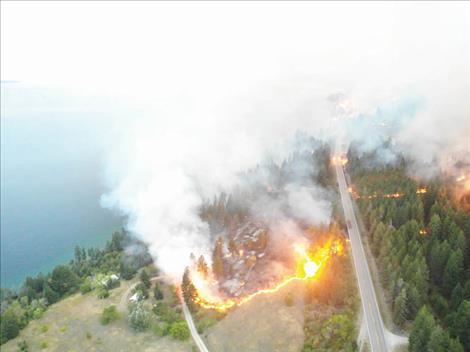Local emergency response, preparedness in need of volunteers
Hey savvy news reader! Thanks for choosing local.
You are now reading
1 of 3 free articles.
LAKE COUNTY — A presentation by the emergency response teams in the Flathead Basin revealed a common need: volunteers.
Presenters of the panel included Nic Winslow of BNSF, Brian Heino of Flathead County, Mark Clary of Lake County, and Dale Nelson of the Confederated Salish and Kootenai Tribes. All of them expressed how emergency response in the Flathead Basin comes down to collaboration.
The emergency teams throughout the basin respond to a variety of events, particularly in the last few years. Water quality is a huge issue; each time a vehicle sinks into Flathead Lake, emergency response acts to remove the vehicle and debris and mitigate any oil spills with equipment such as sock booms and vinyl walls, or, if severe enough, by calling in hazmat teams from Kalispell or Missoula.
Forest fires pose another challenge for the area. The Bolder 2700 fire was the first seen by Lake County that caused loss of structures, though thankfully there was no loss of life. The Sheriff’s department helped evacuate residents, an evacuation location had to be set up for those who had lost their homes, and there was the risk of burned structures and debris sliding down into the highway or lake with the loss of vegetation. The CSKT forestry department stepped in to help stabilize the area, preventing logs, rocks, and debris from causing further damage in a slide.
During the peak of the pandemic, the emergency response departments worked together to maintain a unified command, condensing tribal and public health to keep the community healthy across the basin’s borders.
Each team in the basin works together, sharing resources, equipment and personnel as needed both when an emergency is called in, and when something can be done ahead of time to prevent one. They have the connections to loop in other departments as well, from search and rescue to forestry services.
“All of us work together and get the job done,” said Nelson.
The BSNF Railway contributes as well, working on spill prevention and compliance response plans for the railway, and keeping equipment available and pre-inspected for emergencies so it’s ready to go when it’s rolled into an event. They also extensively train first responders in adverse conditions from cold weather to fast moving water to assure a fast response when they’re asked for help.
“We would not survive in our counties without co-response,” Clary stated. “You never know when your bad day’s coming.”
Yet, the emergency response in the Flathead Basin could fall apart within years, presenters shared, if they continue to lose volunteers.
One presenter said that, while he understands why so many new people have been drawn to the area, they need to realize that the environment that attracted them cannot be sustained without their participation. The partnership and community are what make small towns work. Without volunteers, they crumble.
To volunteer with local search and rescue, fire districts, or EMS, individuals are encouraged to simply call and ask.
“It takes individuals making commitments to sustain a program. You have to spend the time, even though we’re all busy,” Heino said. “There’s always a need. There’s always an opportunity.”

















